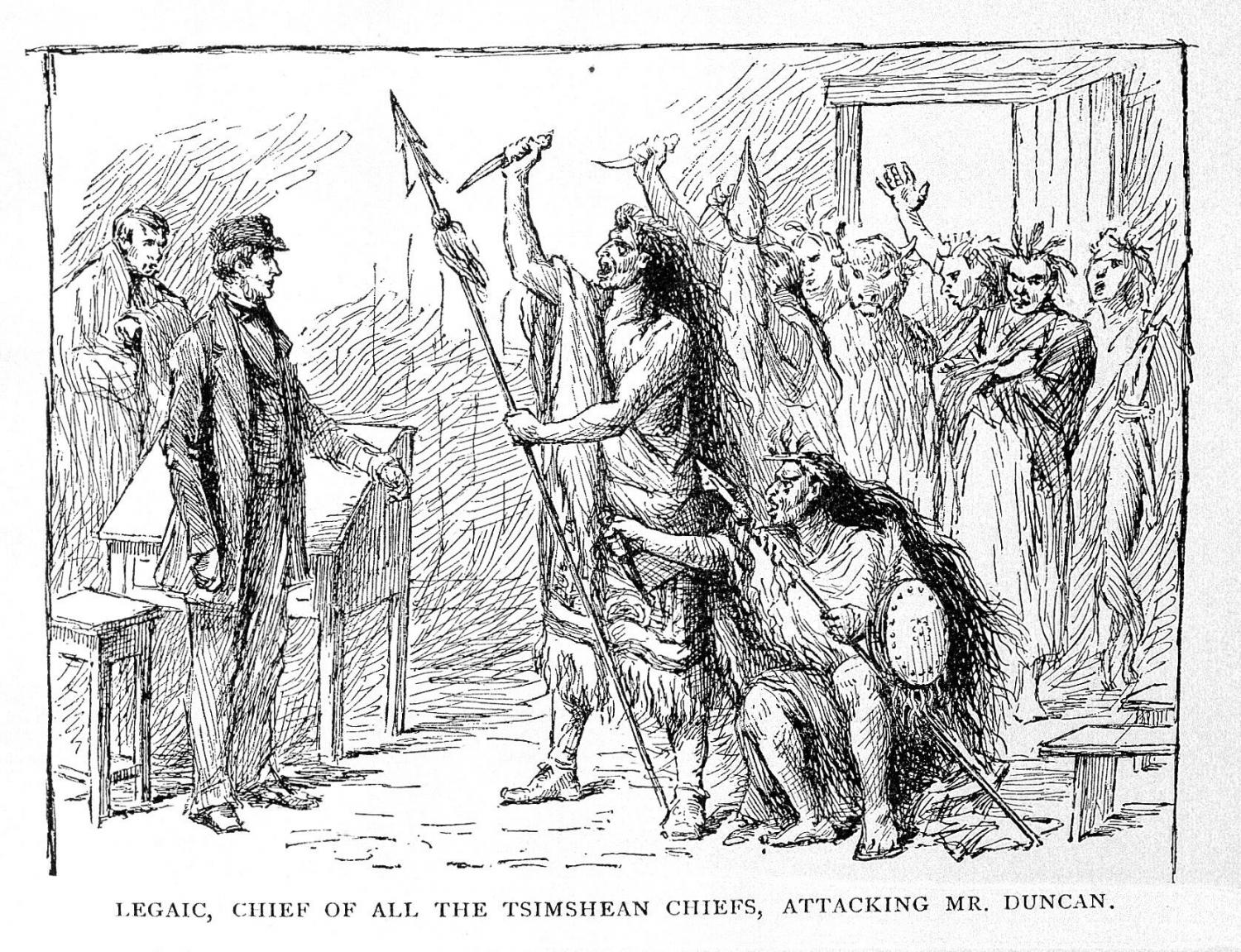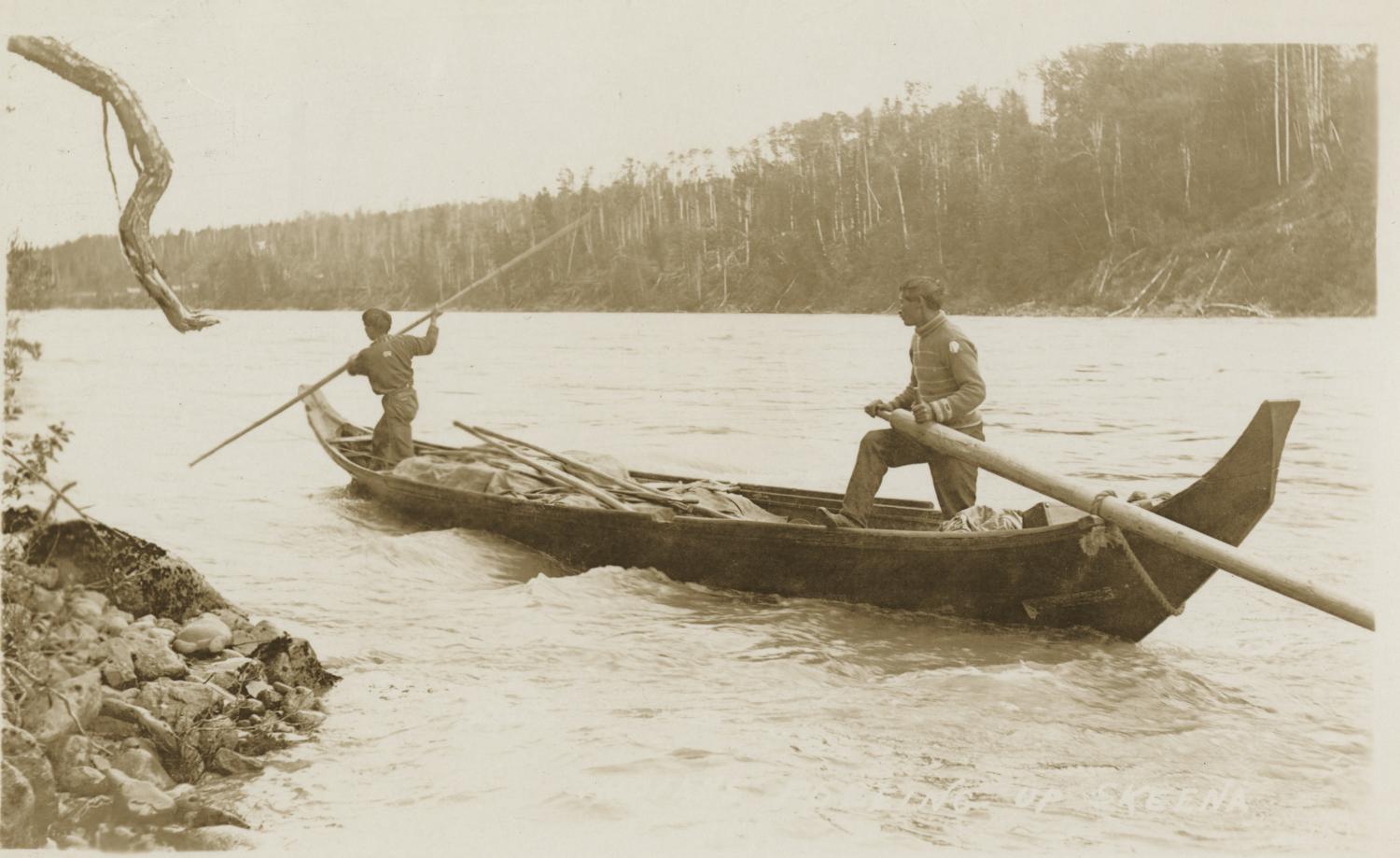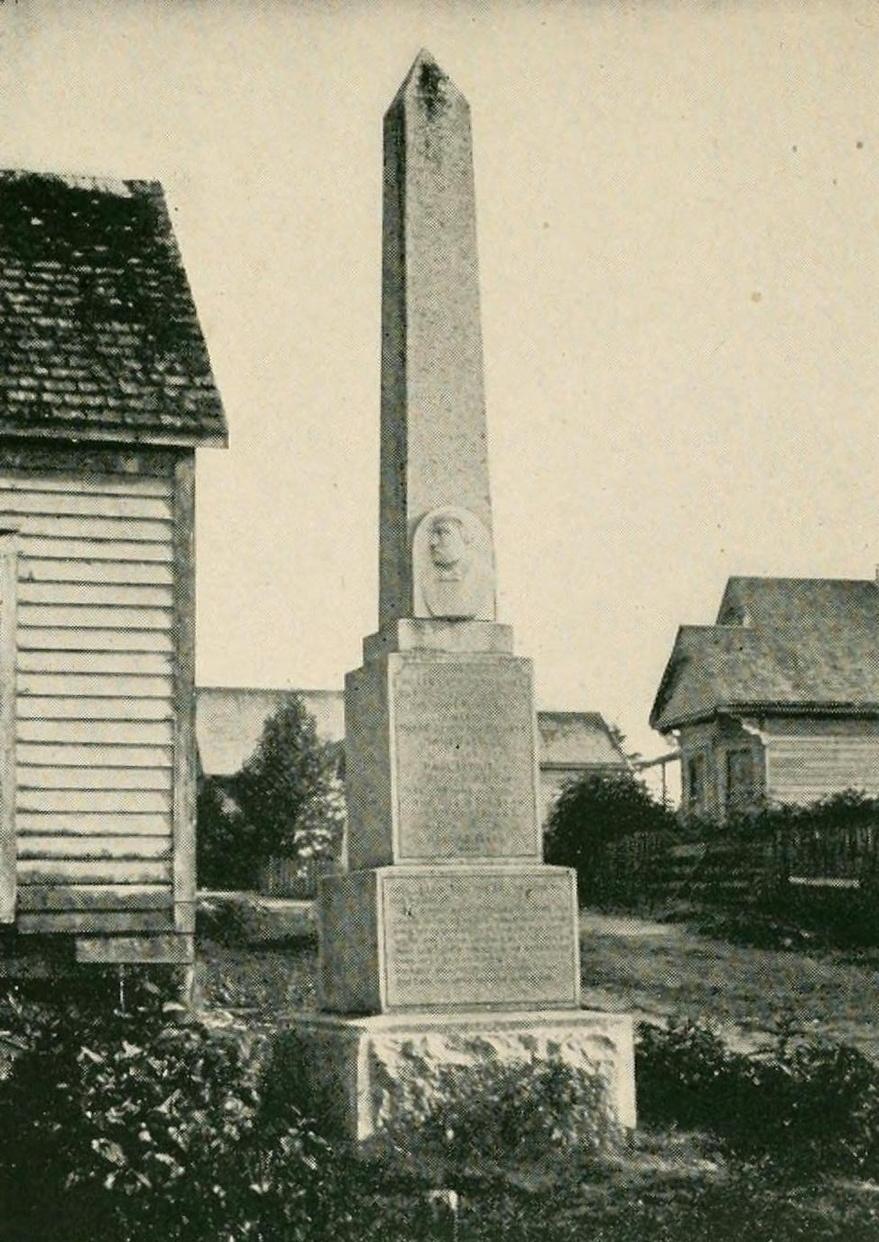Chief Legaic’s Legacy
A line of Tsimshian chiefs head an impressive trade network along the northwest coast
Date: 1836
In the early 1800s, the north coast of present-day British Columbia was alive with mercantile activity. Chiefs such as the Haida's Skidegate and Shakes of the Tlingit oversaw much of the trade that was taking place between local First Nations and newly-arrived Europeans. But for the better part of a century, one line of Tsimshian chiefs — the Legex, or Legaics — reigned supreme, wielding enormous power over an extensive trade empire.
Trade with Europeans started in the late 18th century. From 1775 to 1825, more than 450 ships travelled up the coast to trade their wares for fur sold by Indigenous communities living between Haida Gwaii and the mouth of the Skeena River. It was in these early years that one of the Legaic chiefs emerged as a prominent figure in the coastal trading world. He oversaw all commerce between Fort Simpson, or Lax Kw'alaams, to areas further inland, near what is now Hazelton and the Nass Valley. This reign would continue as the Legaic chieftainship was passed down throughout the 19th century.
But as the years passed, British traders became frustrated; they found themselves competing with a growing number of American and Russian traders. Perhaps their most formidable trade rival, though, was Chief Legaic himself. As a coastal Tsimshian, Legaic had the enviable role as middleman between sea-based European fur traders and the more remote First Nations who lived away from the coast, such as the Gitxsan. It was a position of immense power, which he wielded with a tight grip.
In an effort to curb the Legaic trade hegemony, the Hudson's Bay Company (HBC) established several forts, both inland and along the coast, including Fort Kilmaurs by Lake Babine in 1822, Fort Connolly near Bear Lake in 1826 and Fort Simpson — modern-day Lax Kw'alaams — in 1834. Despite their best attempts, Legaic remained omnipresent. Pictographs of the chief dotted the Nass and Skeena Rivers as if he was marking his territory. In 1836, Legaic took over the Gitxsan village of Kitwanga, which sat at the confluence of the Bulkley and Skeena Rivers, near Hazelton. The Skeena River had effectively come under his control; any cargo transported along it was carried in his canoes, which came with hefty freight rates.
In 1857, the then-Chief Legaic met a strategic ally: British missionary William Duncan. Duncan had come from Fort Victoria to establish a Christian utopia among "the Natives." After founding such a settlement in Metlakatla in 1862, Legaic took steps to align himself with Duncan and Christianity, even being baptized in 1863 as Paul Legaic. For the Tsimshian chief, his conversion reflected the utility he saw in the white man's religion, not a spiritual transformation. Their differing views caused Legaic and Duncan to butt heads, especially when the missionary discouraged traditional Tsimshian practices like the potlatch. In one particularly heated moment, Legaic almost killed Duncan in church. He was only stopped by another Christian Tsimshian man armed with a gun. Nevertheless, while Duncan remained influential in the Tsimshian community, he also proved useful in cementing Legaic's hold on the trade network along the northwest coast.
It's unclear when Chief Legaic passed. Different records place his death in either 1869 or 1894. Interestingly, a total of seven Legaics lived in the 19th century, as the title would be passed down through potlatches. Ultimately, this monopoly would fade by 1892 when the HBC put a steamboat on the Skeena River, undermining any need for Legaic's trade network.
Sources:
1. Angelbeck, William O. "They Recognize No Superior Chief": Power, Practice, Anarchism and Warfare in the Coast Salish Past. University of British Columbia, Apr. 2009, www.collectionscanada.gc.ca/obj/thesescanada/vol1/BVAU/TC-BVAU-7412.pdf.
2. Johnson, I.V.B. LEGAIC, PAUL. Dictionary of Canadian Biography, www.biographi.ca/en/bio/legaic_paul_12E.html.
3. McDonald, James A., and Jennifer Joseph. Key Events in the Gitksan Encounter with the Colonial World . Anthropology Department at the University of Northern British Columbia, mcdonald.unbc.ca/PDF/indigenous/keyevents.pdf.
4. Memorial Dedicated to Ligeex, Head Chief of Port Simpson. Northern B.C. Archives at the University of Northern British Columbia, Circa 1932, search.nbca.unbc.ca/index.php/memorial-dedicated-to-ligeex-head-chief-of-port-simpson.
5. Seguin Anderson, Margaret. The Tsimshian: Images of the Past, Views for the Present. UBC Press, 1984.
6. Wolfhard, Eric. Title and Rights in the Traditional Territory of the Kitsumkalum Indian Band. 22 Oct. 2014, kitsumkalum.com/wp-content/uploads/2019/04/Kalum-Title-and-Rights-6.pdf.






